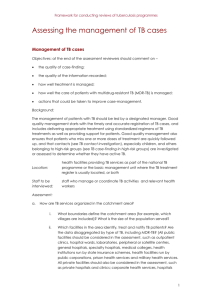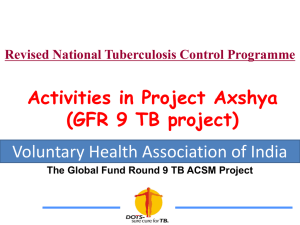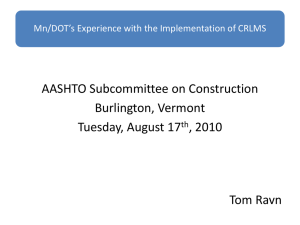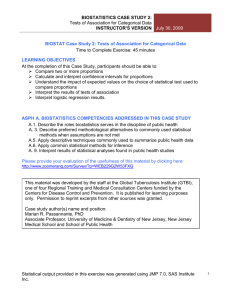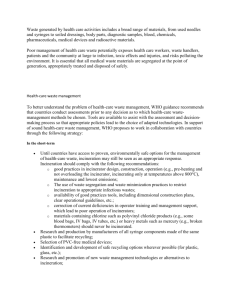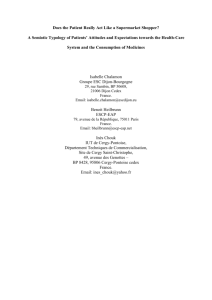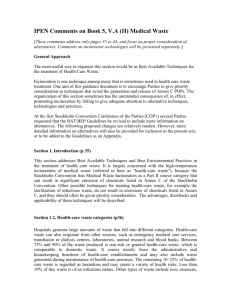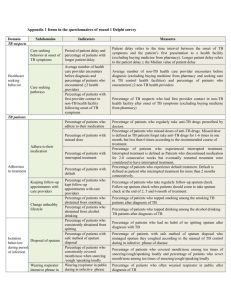Assessing patients` adherence to TB treatment Patients` adherence
advertisement
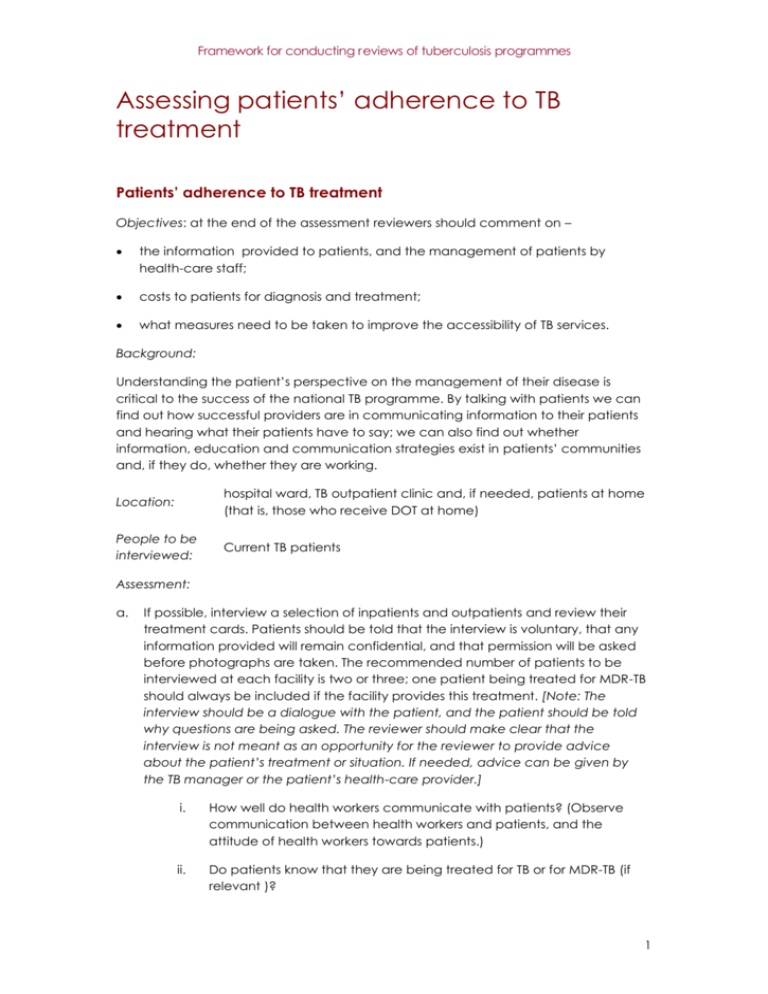
Framework for conducting reviews of tuberculosis programmes Assessing patients’ adherence to TB treatment Patients’ adherence to TB treatment Objectives: at the end of the assessment reviewers should comment on – the information provided to patients, and the management of patients by health-care staff; costs to patients for diagnosis and treatment; what measures need to be taken to improve the accessibility of TB services. Background: Understanding the patient’s perspective on the management of their disease is critical to the success of the national TB programme. By talking with patients we can find out how successful providers are in communicating information to their patients and hearing what their patients have to say; we can also find out whether information, education and communication strategies exist in patients’ communities and, if they do, whether they are working. Location: hospital ward, TB outpatient clinic and, if needed, patients at home (that is, those who receive DOT at home) People to be interviewed: Current TB patients Assessment: a. If possible, interview a selection of inpatients and outpatients and review their treatment cards. Patients should be told that the interview is voluntary, that any information provided will remain confidential, and that permission will be asked before photographs are taken. The recommended number of patients to be interviewed at each facility is two or three; one patient being treated for MDR-TB should always be included if the facility provides this treatment. [Note: The interview should be a dialogue with the patient, and the patient should be told why questions are being asked. The reviewer should make clear that the interview is not meant as an opportunity for the reviewer to provide advice about the patient’s treatment or situation. If needed, advice can be given by the TB manager or the patient’s health-care provider.] i. How well do health workers communicate with patients? (Observe communication between health workers and patients, and the attitude of health workers towards patients.) ii. Do patients know that they are being treated for TB or for MDR-TB (if relevant )? 1 Framework for conducting reviews of tuberculosis programmes iii. Do patients know how long their treatment for TB will last? iv. Do patients take their medication while they are being directly observed? Is treatment convenient for the patient in terms of the time and location? v. Do patients take their medication regularly? How many doses were missed during the past month? vi. What are the main issues that affect whether a patient follows the treatment plan? (For example, has the patient had any adverse effects, have there been problems with deliveries of medicines or DOT services, transport or problems at work?) vii. Are the treatment cards correctly administered? viii. Do patients in the continuation phase know about the schedule for follow-up sputum examinations and the final review? ix. Do patients pay for their anti-TB medicines or other health-facility fees? If patients must take transportation to the clinic, what is the cost? Do patients incur other costs directly related to their disease (for example, for tests and medicines, and for managing adverse reactions)? x. Has the patient ever been treated for TB in the past? Do patients know how they became infected with TB? xi. Have patients received health information about their disease, treatment and prognosis? Do they understand the information that they were given? xii. Do patients feel that the health-care services satisfactorily address the emotional and spiritual suffering that results from the disease and its treatment? xiii. Do patients feel that their privacy is respected when they interact with the health services? xiv. Do patients receive any incentives or enablers to continue treatment (for example, food, transport vouchers or money)? xv. What do patients’ families and people in their communities think about TB? Do patients feel stigmatized or discriminated against because of their disease? 2 Framework for conducting reviews of tuberculosis programmes Indicators for: Assessing patients’ adherence to TB treatment Indicator Calculation Source of information DOT provision and adherence Number of patients receiving proper DOT Interviews with patients Awareness of TB disease and treatment Ratio of the number of patients correctly describing the most important information about TB disease and treatment to the total number of patients interviewed Interviews with patients Provision of incentives Ratio of the number of patients receiving incentives to the total number of patients Incentives distribution register, TB treatment register Accessibility of services Ratio of the number of patients reporting making any payment for any service needed for TB care (for example, payment for a sputum test) to the total number of patients interviewed Interviews with patients DOT, directly observed treatment. 3
